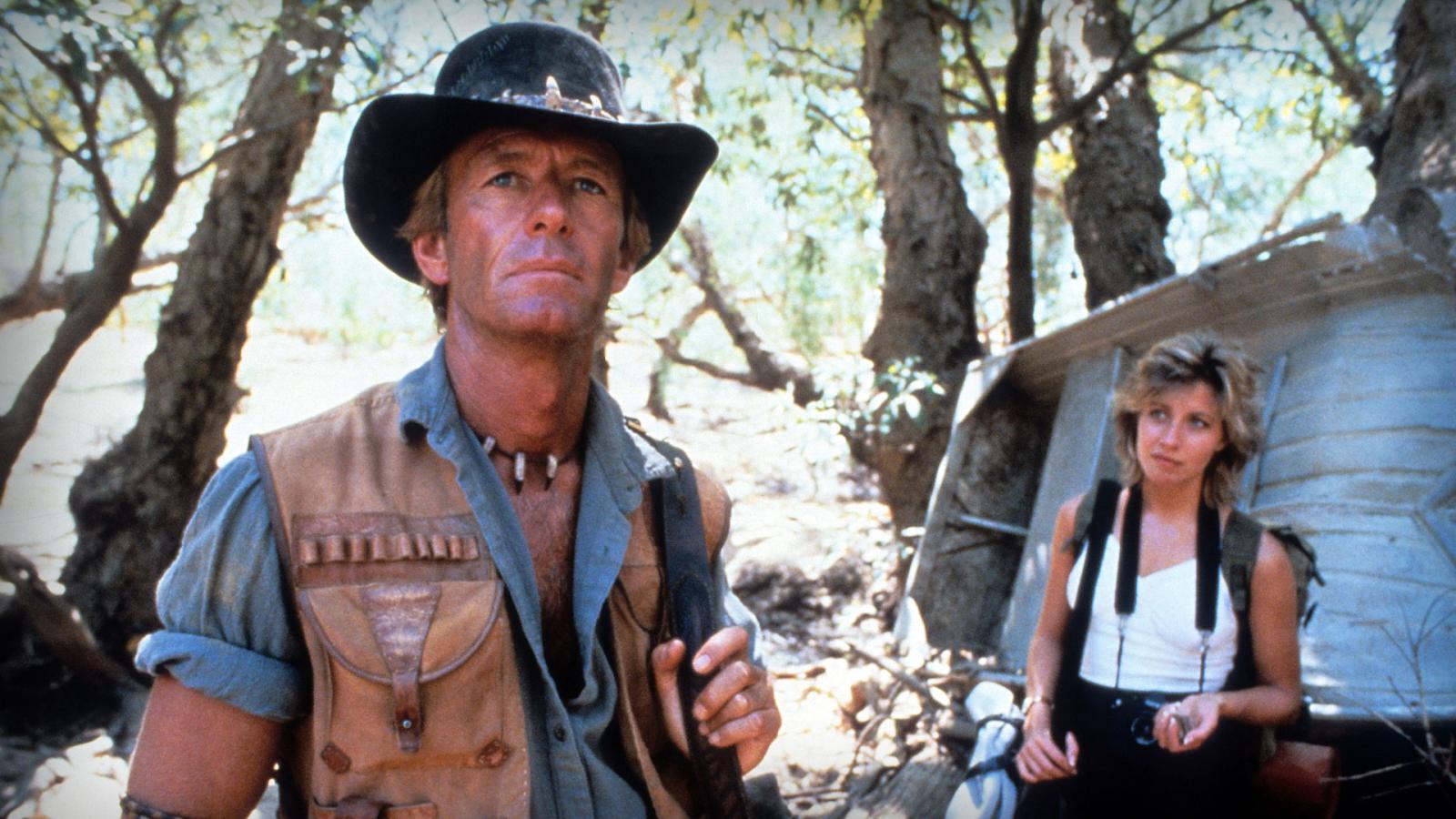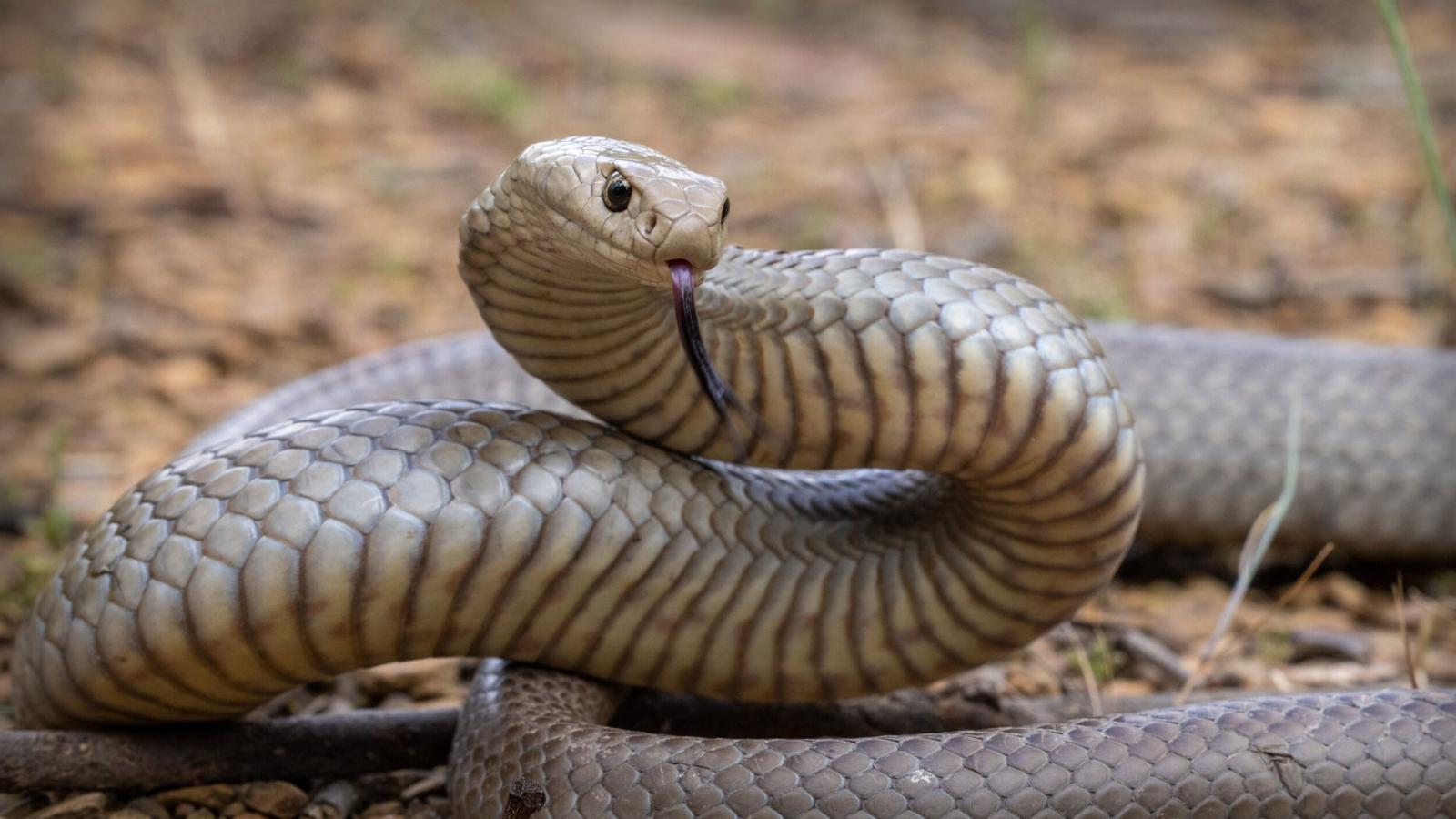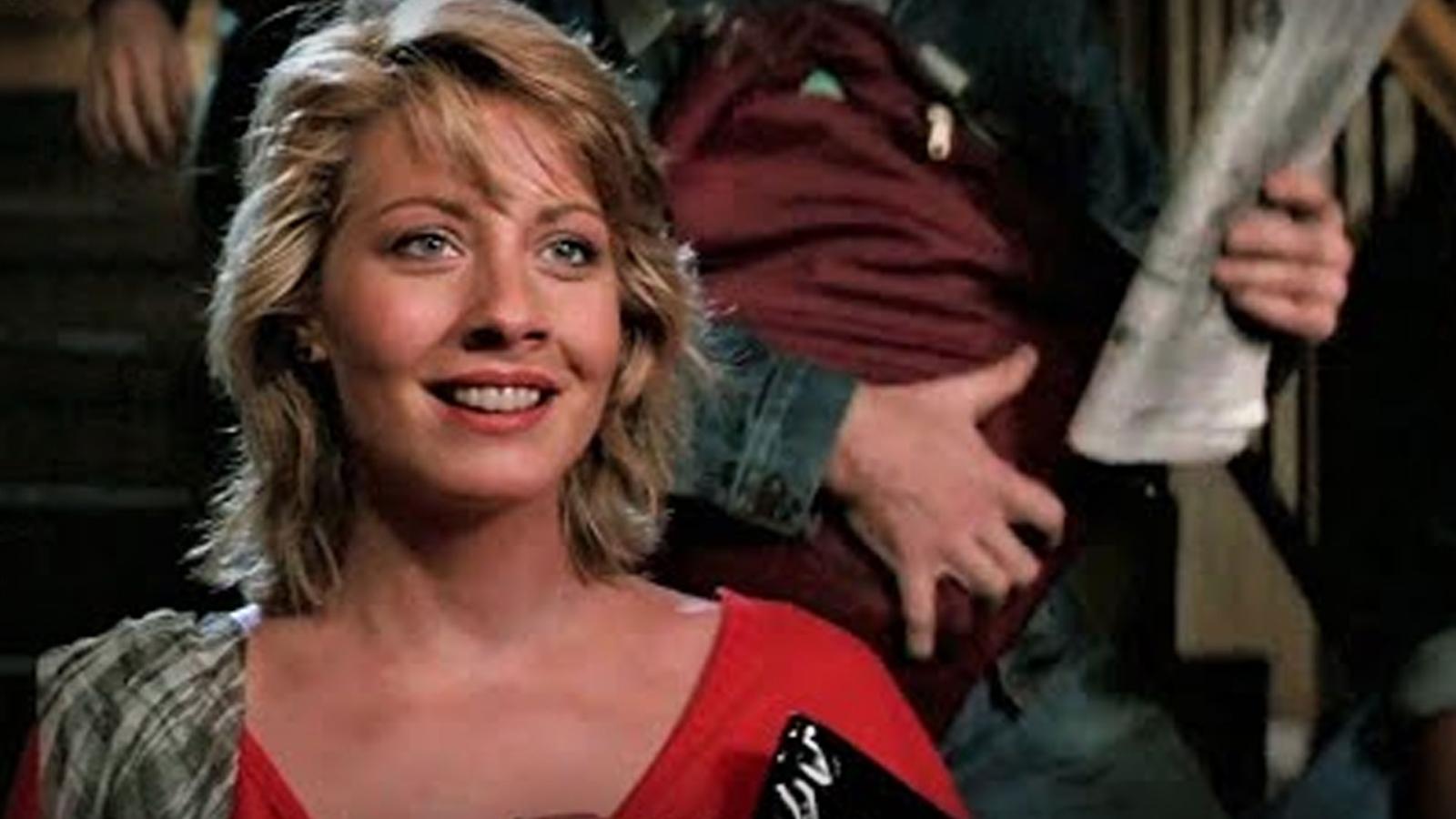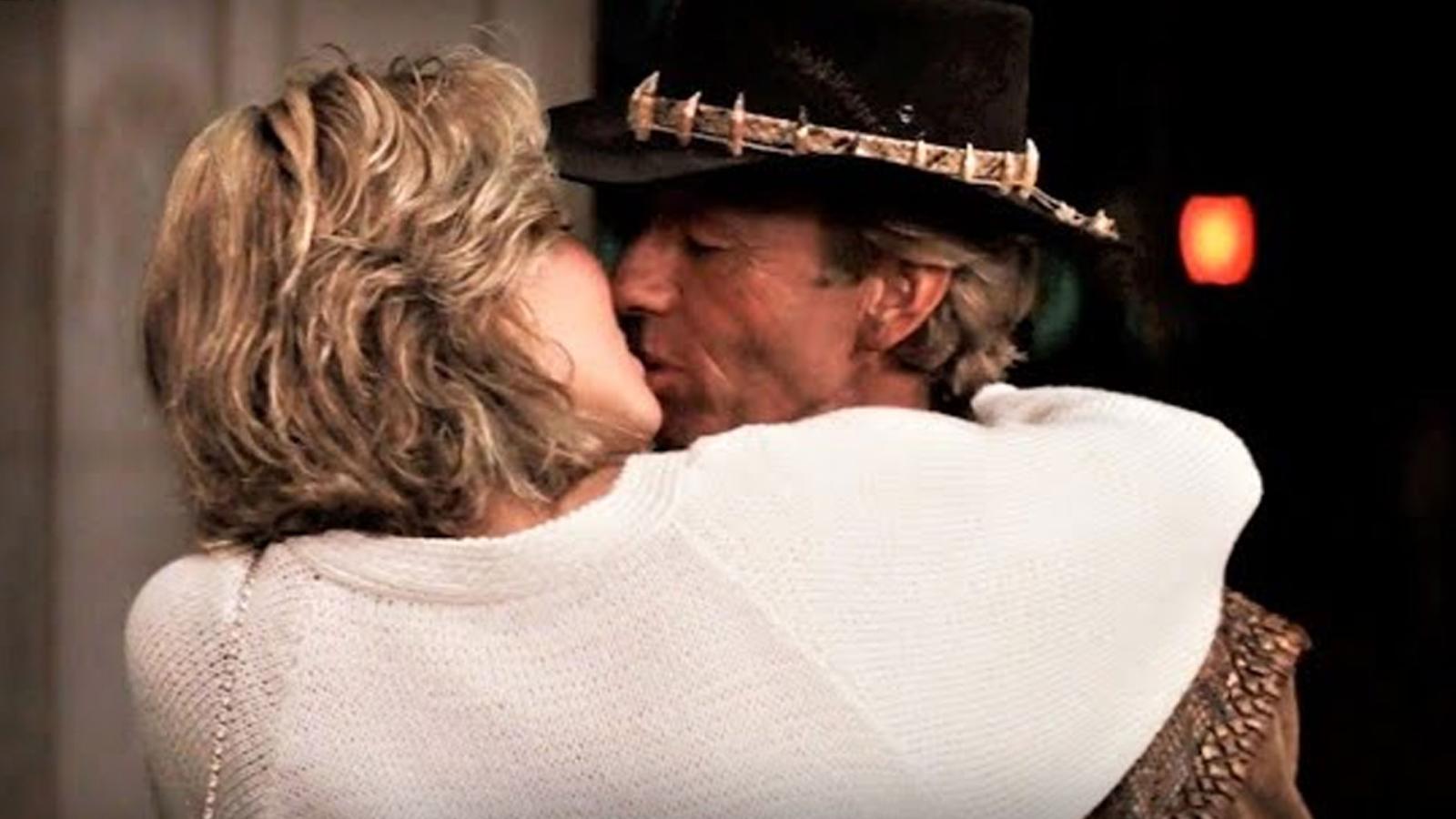Crocodile Dundee (1986): 20 Weird Facts You Didn't Know!

It started as a locally funded gamble and ended as one of the biggest box office surprises of the 1980s.
Released in 1986, Crocodile Dundee introduced international audiences to Paul Hogan's bushman outsider—and turned a modest Australian film into a $300 million global phenomenon.
But behind the oversized grin, fish-out-of-water setup, and iconic one-liners, the production was anything but smooth. From casting changes and real crocodile encounters to stunt mishaps, improvisations, and unexpected offscreen romances, Crocodile Dundee came together with equal parts luck, instinct, and sheer force of will.
Here are 20 behind-the-scenes facts about the film that launched a franchise, rewrote Australia's box office history, and introduced a character the world didn't see coming.
1. The Real-Life Inspiration Had a Tragic End
The character of Mick Dundee was likely inspired by Rod Ansell, a real Australian bushman who survived for months in the wilderness after a boating accident. He drank cow's blood, ate insects, and became a media curiosity in the early 1980s. But his story didn't end in survivalist folklore. Years later, Ansell was involved in a drug-fueled standoff with police. He and a young officer were both killed. Paul Hogan never confirmed the link, but the parallels were impossible to ignore.
2. Paul Hogan Funded the Film Himself
Before Crocodile Dundee, Hogan was a TV personality and comedy writer, not a movie star. Studios passed on his pitch—too niche, too Australian, too odd. So he co-wrote the script, raised the money locally, and shot the film without U.S. backing. The risk paid off. It became the highest-grossing Australian film of all time, and eventually a $300 million global success.
3. American Executives Tried to Dub Hogan's Voice

When U.S. studios first screened the film, some executives walked out after 20 minutes. They claimed the slang was incomprehensible, the tone too local, and Hogan's accent too thick. One even suggested dubbing him with an American voice actor. Hogan refused. Instead, they created a lightly modified "international cut" that preserved the tone—and proved the execs completely wrong.
4. The Concept Came From a Street Incident
The film didn't start with a writing session. It started on a sidewalk. While promoting a comedy special in New York, Hogan saw a crowd verbally attack a homeless man. He was struck by how aggressive and chaotic the city could be—and imagined what it would look like through the eyes of someone completely removed from that world. That seed became Mick Dundee.
5. The U.S. Title Was Changed for Clarity
In Australia, the title was simply Crocodile Dundee. But when testing the film in the U.S., marketers worried audiences wouldn't know what "Dundee" referred to. Was it a town? An animal? They added quotation marks—"Crocodile" Dundee—to signal it was a nickname, not a documentary. It worked, and helped the film stand out in early marketing.
6. A Real Crocodile Wandered Onto the Set
While filming in the Northern Territory, the crew found a crocodile had slipped into a nearby watering hole overnight, drawn by the scent of food scraps. There were no handlers nearby. No one was hurt, but production shut down for a day, and real firearms were quietly added to all future water-side shoots.
7. A Crew Member Was Bitten by a Venomous Snake

During a low-angle setup near tall grass, a camera assistant was bitten by a small but venomous snake. The medic on set acted fast. The crew airlifted him out within the hour. He survived, but from that point forward, safety protocols were taken a lot more seriously.
8. Linda Kozlowski Slept in a Tin Shack During Filming
Before landing the role of Sue, Kozlowski had never filmed outside a studio. While the male crew stayed in trailers, she was given a corrugated tin hut with no plumbing or insulation. She never complained. That quiet discomfort, she later said, informed her performance more than any direction.
9. Hogan Refused to Replace His Old Hat
The crocodile-skin hat Mick wears in the film was Hogan's own—scuffed, bent, and broken in. The costume department wanted to replace it for continuity. Hogan refused. In the end, they made exact duplicates, aging them by hand to match the original. Off-camera, he still wore the real one.
10. The Buffalo Scene Took Hours and a Tranquilizer
The famous shot of Mick freezing a buffalo with a hand gesture wasn't done with camera tricks. The trained buffalo refused to cooperate. After several hours, a mild tranquilizer and pure luck allowed the animal to stay still long enough for the scene. Hogan improvised the gesture on the spot.
11. "That's Not a Knife" Was Improvised
The line wasn't in the script. The original dialogue was flat. Hogan pitched an alternate version on the spot—"That's not a knife… that's a knife." The test screening went silent, then exploded in laughter. It became one of the most quoted movie lines of the decade.
12. New Yorkers Thought Hogan Was the Real Deal
During filming in Manhattan, Hogan was still relatively unknown in the U.S. Locals assumed he really was a knife-wielding Outback survivalist. Tourists asked for directions. One man asked about hunting tips. Hogan stayed in character for most of it—even when cameras weren't rolling.
13. The Subway Ending Was Pulled From Real Experience

That final subway scene—Mick in a packed station, passing a message through the crowd—was inspired by a moment Hogan had lived. Months earlier, he'd tried to say goodbye to someone in a chaotic train station but couldn't make it through the crowd. That emotional frustration became the scene's core.
14. Some Audiences Thought He Was Clint Eastwood
In overseas markets with bootleg translations, Paul Hogan was miscredited as Clint Eastwood. The squint, the accent, and the hat were enough for distributors to lean into the confusion. Hogan later joked that Eastwood could have the press—"but he's not getting the hat."
15. Michael Hutchence Quietly Helped Fund the Film
INXS frontman Michael Hutchence was part of Australia's creative scene and quietly helped finance the movie through informal channels. He took no credit, made no public statement, but was proud of backing what became a global phenomenon.
16. Hogan's Wife Was Originally Cast as the Lead
Paul Hogan's then-wife Noelene had been his creative partner for years and was originally cast as Sue. But during early shooting, the chemistry wasn't working. Producers raised concerns. Hogan resisted at first, then agreed. Linda Kozlowski was flown in. The change was quiet—but it changed everything.
17. The On-Screen Romance Became Real

Hogan and Kozlowski's chemistry didn't stop when cameras did. The two grew close during filming. At the time, Hogan was still married. After the film's release, the relationship became public. He eventually divorced Noelene and married Kozlowski. They stayed together for over 20 years.
18. Hogan Carried His Money in Cash
After the film's massive U.S. success, Hogan found himself with sudden wealth—and little trust in the system. Rather than route money through accountants, he flew between L.A. and Sydney with tens of thousands in cash hidden in luggage and envelopes. When asked about it later, he said, "That's how we did it back then."
19. The Film Was Never Supposed to Be a Hit
The budget was modest. The story was simple. The cast, mostly unknown. But Crocodile Dundee connected. It became the second highest-grossing film of 1986 in the U.S., just behind Top Gun. Audiences didn't just laugh—they brought friends back. Word of mouth made it unstoppable.
20. Hogan Refused the Hollywood Publicity Machine
Studios wanted Hogan on every talk show. He declined. He called it "plastic TV" and avoided the late-night circuit. His strategy? Let the movie speak for itself. The low-profile only added to his appeal—and the image of Dundee as someone who didn't play by Hollywood's rules.